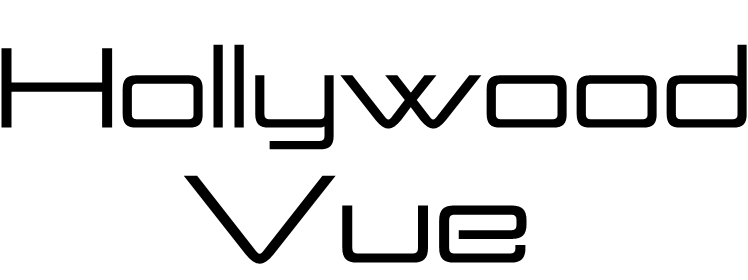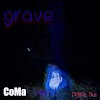Photography of Daniel Dover's Illustration | credit : www.doverd.com
Visual artist Daniel Dover is entering a dynamic and expansive new phase in his creative journey, with major projects unfolding across fine art, public murals, and animated media. Widely recognized for his evocative work that fuses painterly sensibilities with powerful visual storytelling, Dover is poised to deepen his exploration of human experience, public space, and narrative form.
This summer, Dover will debut a series of solo exhibitions in New York and other cities, unveiling new pieces that continue his inquiry into themes of form, connection, and the poetry of everyday life. These shows promise to offer an intimate yet provocative look into Dover’s evolving artistic language—rooted in fine art traditions while fearlessly contemporary in tone and execution.
Concurrently, Dover is embarking on a new wave of large-scale mural projects set to appear throughout New York City in the coming months. These public artworks build on the momentum of previous acclaimed murals in Tel Aviv and his animated light installation at Tel Aviv City Hall, which has become a beloved cultural landmark. Through these upcoming pieces, Dover will once again bring his bold, symbolic visual language into active dialogue with the urban environment and its communities.
In the realm of animated storytelling, Dover is also expanding his footprint. He is currently contributing animated sequences and conceptual design to several documentary films in development—seamlessly extending his illustrative craft into nonfiction formats. These collaborations reflect his natural ability to navigate between narrative depth and visual experimentation, reinforcing his reputation as a boundary-crossing creator.
Over the years, Dover has cultivated a strong presence across galleries and public spaces in Israel, Europe, and the United States. His work is known for its compelling synthesis of personal symbolism, emotional texture, and narrative clarity. Notable past projects include site-specific installations such as a playful series of plastic animal sculptures at recycling sites in Israel, and his commissioned project for the Center for Jewish History in New York City.
This next chapter marks a powerful expansion of Dover’s career—anchored in the same meticulous visual language but scaled up with renewed ambition and cross-disciplinary fluency. Whether working on canvas, concrete, or screen, Dover moves effortlessly between intimate detail and monumental vision. His ability to tell stories—across multiple media—has become a signature trait.
As he steps into this new phase, Dover’s work remains as resonant as ever—offering both continuity and transformation. His upcoming projects reflect a deepening engagement with collaboration, narrative structure, and the shifting boundary between the public and the personal.
Photography of Daniel Dover's Illustration | credit : www.doverd.com
As Dover’s practice expands across disciplines and international platforms, his ability to move fluidly between mediums—while maintaining a cohesive visual and narrative language—has become a defining hallmark of his work. To gain deeper insight into the ideas, techniques, and motivations driving this next phase of his career, we spoke with the artist in an exclusive interview. What follows is a candid and illuminating conversation in which Dover reflects on his creative process, the interplay between collaboration and personal expression, and the evolving role of storytelling in his work across painting, animation, and large-scale public art.
Interview: Daniel Dover on Collaboration, Cross-Medium Storytelling, and the Art of Evolving.
1.How do you handle collaboration in your animation projects, especially when working with a team? How does that dynamic differ from working alone on a painting or illustration?
Daniel Dover: When involved in animation projects that aren’t my own, I’m usually not the one coming up with the concept. I focus more on helping shape how it looks and moves, and how to support and present everything in the best suitable way. It’s more about working with others and figuring out how to make the idea work.
2.Do you see a clear boundary between your personal work and your commissioned or collaborative projects?
Daniel Dover: There’s a difference, but it’s not always that strict or distinct. With collaborative or commissioned projects, I’m usually responding to a goal or brief, trying to support an existing idea. But I think both sides feed each other in useful ways.
3.What role does sound, and music play in your animated works? Do you find that sound influences the visual design and animation, or is it something you focus on later in the process?
Daniel Dover: Sound plays a very big part for me, and I usually have a certain tone or rhythm in mind while animating, even in less frequent cases where the actual sound comes later. It helps shape how the scene moves and feels. A certain sound will determine how I design a scene or time a movement and helps guide the whole feel of the piece from early on.
4.Is there a particular subject or theme that you feel best expresses itself across these mediums? How does your approach change from one medium to the next?
Daniel Dover: I tend to focus a lot on characters and their environments, and find that I’m drawn to creating moments that, although absurd and exaggerated - feel genuine and lived-in. In painting, I focus more on the mood of the scene and how the composition can tell a story on its own. In illustration, it’s more about capturing a specific moment or expression. With animation it’s about bringing those characters and scenes to life and exploring how they evolve. The core idea stays the same though.
5.How do you approach color in your work across painting, illustration, and animation? Are there any common threads that tie these mediums together for you?
Daniel Dover: I tend to use color in a more subtle, often muted way, focusing on creating a mood rather than using bright or intense hues. In painting, I might play with softer or more surreal tones to set a certain atmosphere. In illustration I try to keep things simple, using basic colors to keep the focus clear. I guess animation falls somewhere in the middle.
6.Do you always have a hidden message within your art?
Daniel Dover: I hope so, though occasionally it’s also hidden from me at the time, which is why I really appreciate it when people point them out.
7.Do you ever mix traditional painting techniques with animation? If so, what are some examples, and how does it change the overall aesthetic?
Daniel Dover: Yes, I use traditional hand-painted techniques for both the character drawings and backgrounds. I feel this gives the animation a more natural and personal feel overall, and also keeps me more engaged with the process, as I'd rather work with physical materials over a screen.
8.Are there any techniques or skills you have learned from one medium that you have been able to apply to others?
Daniel Dover: Drawing skills from illustration come in very handy in both painting and animation. And studying how movement works in animation helps a lot with character design and posing for illustrations. They all kind of feed into each other.
9.In your view, what’s the value of experimenting with different mediums? Do you think it’s essential for an artist to keep evolving, or is mastery in one medium just as important?
Daniel Dover: For me it’s more about opening new ways of thinking and approaches. I don’t necessarily see it as a need to constantly evolve, but more to expand on ideas or different moods.
10.What drew you to work on documentary projects in the past, and what are you looking forward to in future ones?
Daniel Dover: The initial appeal is naturally the stories themselves, and I’m very interested in how animation can bring a different layer to non-fiction storytelling. It's always a new challenge, and I enjoy exploring these real-life narratives with a certain personal take.
11.How are you approaching the animation process for these new documentaries, and what’s exciting about it for you?
Daniel Dover: It’s very different each time and depends on what is asked for, but I enjoy figuring out how the animation can best serve the overall project, enhancing the narrative without overshadowing the core idea. It is a mix of experimenting and finding the right approach, and really focusing on how the animation can add depth to each story while also staying true to the original intent.
12.What’s driving your approach to your upcoming mural projects?
Daniel Dover: For the most part, I only prepare rough sketches for mural work, usually just general poses or the basic idea. I try to stay as flexible as possible to make everything fit the environment and not be too constrained by the exact mood or original composition.
13.How do you manage the challenges of working on such a large scale, as opposed to illustration and animation?
Daniel Dover: Aside from the challenge of standing for hours on scaffolds, it’s mostly quite the same as all my other work in terms of approach. I generally find walls to be more forgiving than other mediums, but these upcoming projects will be a new challenge in terms of scale and structure complexity.
To stay informed about Daniel Dover’s expanding body of work across fine art, public installations, and animated storytelling, please visit www.DoverD.com and www.thegreenpointgallery.com for official updates on upcoming exhibitions, large-scale mural projects, and media collaborations.
Dover’s practice continues to redefine the intersection of visual art and narrative—blending emotional nuance with conceptual rigor across mediums and continents. This feature has offered an intimate view into the creative philosophies guiding his latest chapter, from the solitary rhythm of painting to the dynamic demands of collaboration and scale.
“Outtakes” by Daniel Dover opens July 11, 2025
The Greenpoint Gallery
390 McGuinness Blvd., Brooklyn, NY 11222
Further announcements on new commissions, animated projects, and public art installations will follow as Dover’s multidisciplinary vision continues to unfold—thoughtfully, expansively, and with unwavering narrative intent.








0 Comments